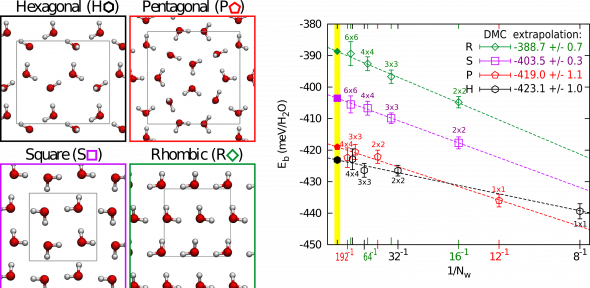
07/12/2016
In this work, Ji, Andrea and Gerit have worked together in re-evaluating the stability of so-called two-dimensional (2D) ice, one of the most interesting and controversial topics about ice in recent years. Recent experiments on ice formed by water under nanoconfinement provide evidence for a two-dimensional (2D) “square ice” phase. However, the interpretation of the experiments has been questioned and the stability of square ice has become a matter of debate. In this paper we have carried out diffusion Monte Carlo (DMC), DFT and force field calculations. We find that at relatively high pressure, square ice is indeed the lowest enthalpy phase examined, supporting the initial experimental claim. Moreover, at lower pressures, a “pentagonal ice” phase (not yet observed experimentally) has the lowest enthalpy, and at ambient pressure, the “pentagonal ice” phase is degenerate with a “hexagonal ice” phase. We have also evaluated the accuracy of various density functional theory exchange-correlation functionals and force field models, and in doing so we extend the understanding of how such methodologies perform to challenging 2D structures presenting dangling hydrogen bonds.
